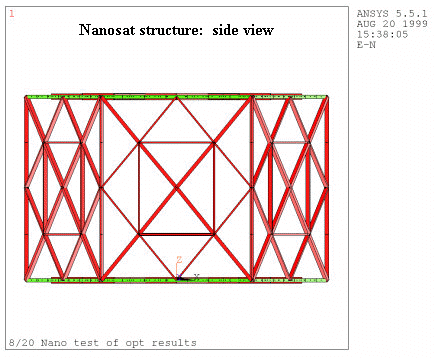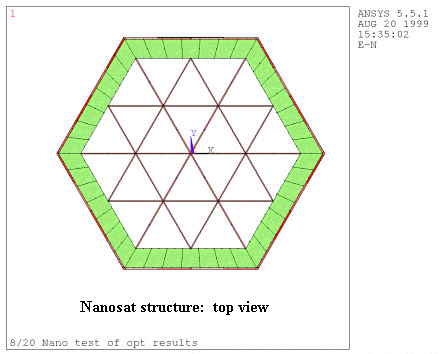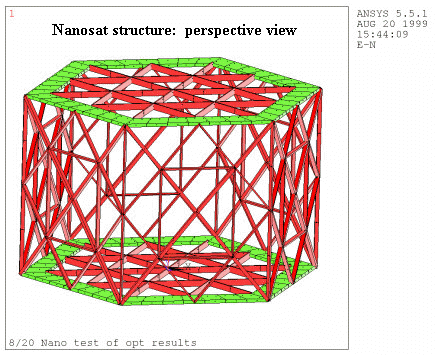|
Structures
The nanosatellite design is a hexagonal
prism. The structure consists of two hexagonal base plates and six side panels.
All parts are composed of aluminum 6061-T651.



The structure of a satellite
must withstand loading experienced while it is being launched. These
launch loads are different for every launch vehicle. Environments
within the payload fairing of launch vehicles often dictate the
structural requirements of satellites.
The Air Force is currently considering launch of the ION-F
cluster from either the Space Shuttle payload bay or the Pegasus expendable
launch vehicle. The payload environments for these vehicles are quite
different. Since the Air Force will not make a final decision on the
launch vehicle until at least November 1999, the Dawgstar must be
designed to withstand the worst-case launch loads of both vehicles.
Based on current
estimates, the structural mass is approximately 1.97 kg, which meets mass
budget requirements. Further reductions in mass may be obtained following
future design improvements.
In order to optimize structure
strength while minimizing structural mass,
graphite fiber reinforced plastic (GFRP) may be used. With proper
consideration of conductive properties, a composite structure for the UW
nanosatellite is viable. Further research into spacecraft shielding and
ionospheric charging may be necessary to provide adequate protection to the
craft.
|